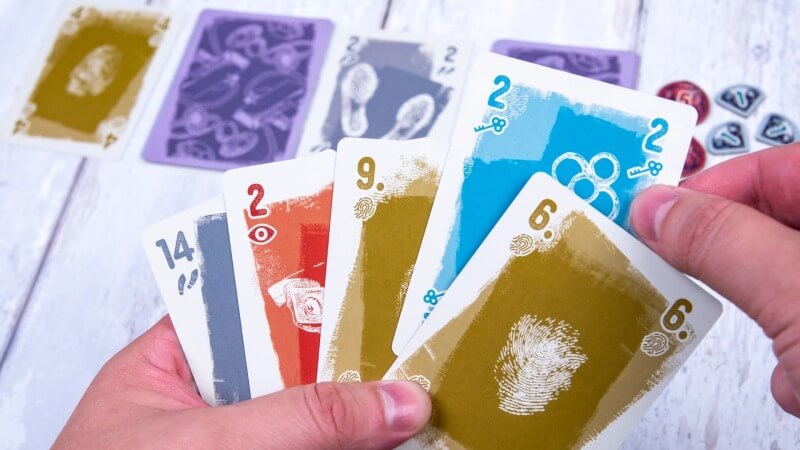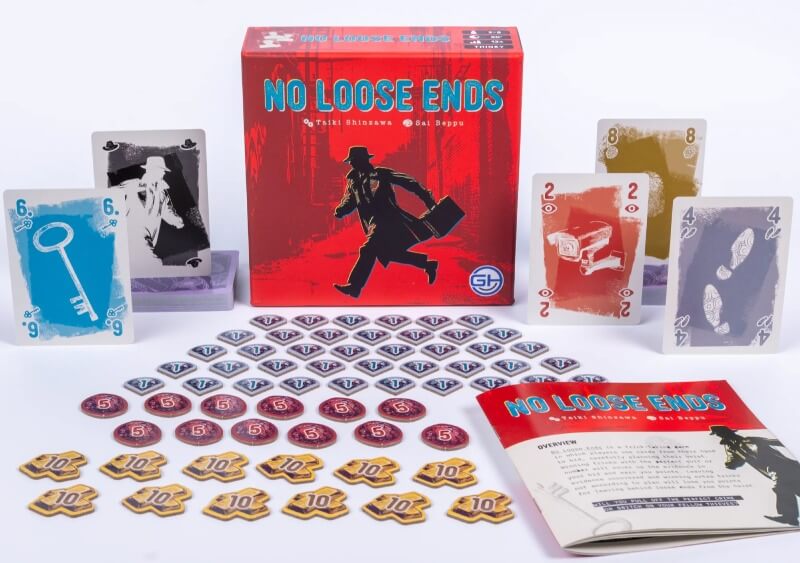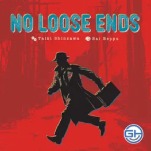No Loose Ends Introduces New Tricks in Trick-Taking
Images courtesy of GameHead
No Loose Ends is a new, English-language edition of a trick-taking game first published as Shut the Books in Japan, where trick-taking games have really taken off in the last five years or so, with a significant number of trick-takers coming back this way across the Pacific. The challenge, of course, is to create a trick-taking game that does something new, since the main mechanic is so familiar (and, since I grew up seeing my parents play bridge with their friends, kind of boring on its own).
No Loose Ends passes the test with a pretty simple but ingenious twist: You have to predict how many tricks you’re going to win, and then win tricks that match the suits and/or values of the specific cards you laid down in the bidding round. It’s a difficult puzzle to solve, with other players obviously trying to do the same thing with their own bids (all public), and manages to keep most rounds tense right through the last trick.
No Loose Ends has a deck of cards numbered 1 through 15 in four suits, although you’ll vary which cards you use by player count. At the start of each round, there’s a bidding phase, where players go around and play one card from their hands to the table per turn, representing a trick they believe they’ll win. You can bid as few tricks as you’d like, but the maximum bid is equal to eight minus the player count.
Once all players have passed or hit the maximum bid, you move to the trick-taking round. This proceeds as with most trick-takers: you have to follow suit, top value wins. The blue suit is the trump suit, always, and you can’t play it unless you are void in the lead suit or the lead suit was also blue.
-

-

-

-

-

-

-

-

-

-

-

-

-

-

-

-

-

-

-

-

-

-

-

-

-

-

-

-

-

-

-

-

-

-

-

-

-

-

-

-









































